Random thoughts about some of the chapter books we’ve read. We’ve made an effort to focus on diverse, fleshed-out girl protagonists, so our selection reflects that.
Most of these are also rated on a goodreads shelf.
Is your kid transitioning away from chapter books? Well, I also started a list of books without pictures.
Early chapter books
These are a step above early readers. Technically divided into chapters, the chapters are often stand-alone stories, but even when an arc lasts the whole book, they’re short and direct and calm.
Houndsley & Catina series, James Howe

- Premise: Anthropomorphized animals have various simple adventures.
- General thoughts: We really liked this series. The stories are calm and quiet, with occasional good descriptive imagery (aside from the pictures). We particularly liked Houndsley & Catina and the Quiet Time.
- Social commentary: None. Animals are anthropomorphized.
Baby Monkey, Private Eye, Brian Selznick
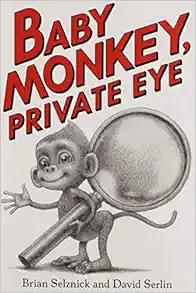
- Premise: A baby monkey solves mysteries
- General thoughts: Looks like a big book, but the huge font makes it a quick read. (Arguably a picture book, perhaps) The repetition in the stories is good for early readers, and the elements that vary per story, usually in the lush drawings that accompany each story, invite deeper exploring.
- Social commentary: None
Poppleton series, Cynthia Rylant
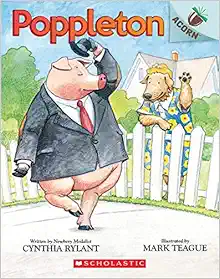
- Premise: A slightly antisocial anthropomorphized pig who seems to have retired from a busy life has encounters with other anthropomorphized friends.
- General thoughts: Enjoyable, and classic.
- Social commentary: None
Charlie and Mouse series, Laurel Snyder

- Premise: Two brothers have a variety of simple adventures (party at the playground, grandfather visiting) that tie into a story arc across all the chapters.
- General thoughts: A sweet series showing kids being typical goofy kids. We really like the gentle rhythm in these.
- Social commentary: The boys are lightly “of color” and the backgrounds are inspired by Hawaii.
The Bad Guys series, Aaron Blabey

- Premise: Much-maligned “bad” creatures (snake, wolf, shark, piranha) decide to try and help people. To become “good guys.” It doesn’t work out the way they expect.
- General thoughts: There’s lots of humor in these books, especially in the visuals. The plots are appropriately cuckoo.
- Social commentary: The Piranha’s Latin persona relies a bit more on stereotypes than one would like.
King & Kayla series, Dori Hillstead Butler

- Premise: The dog is the narrator and is frustrated by the fact that Kayla doesn’t understand his advice, even though his sense of scent is strong enough to figure out the mystery way faster than Kayla.
- General thoughts: Enjoyable and amusing
- Social commentary: Kayla is African-American
Katie Woo series, Fran Manushkin

- Premise: Katie Woo has fairly standard little-kid adventures and often has to deal with emotions typical of the age group.
- General thoughts: Katie Woo isn’t always 100% likable, but the stories remind me of Daniel Tiger’s social-emotional morals.
- Social commentary: Katie Woo is Asian-American, and her two main friends are also people of color, but she’s occasionally portrayed as a bit bossy, a word that is the bane of gifted girls everywhere.
More Advanced Chapter Books
These stories can be a bit more nuanced, but are still not going to have any real surprises.
Princess in Black series, Shannon Hale

- Premise: An all-in-pink-frou-frou princess is also secretly the kingdom’s unstoppable monster-fighting hero The Princess in Black.
- General thoughts: We love this series. PiB was a Halloween costume one year. Aside from the wonderful Batman-esque juxtaposition of pretty-in-pink-princess and super-fighter-always-dirty superhero, there’s some nice writing sprinkled throughout the text.
- Social commentary: Caucasian girl as valiant superhero with solid fighting skills. People of color as minor characters, and the only real boy is a doofus.
Franny K. Stein series, Jim Benton

- Premise: A young elementary-school girl is also a spider-and-bat-loving genius mad scientist. She navigates the day-to-day life of school in, uh, a unique way.
- General thoughts: These books are hilariously silly, and full of puns that parents will recognize, and Franny is just an imaginatively wild character. She’s not always very nice — at first, she says hurtful things to the dog her mom gets her — but she ultimately ends up on the right side of things, in her own way.
- Social commentary: Purple-haired Caucasian girl as mad scientist utterly flummoxed by her completely normal parents (who make brief appearances)
Mr. Putter & Tabby series, Cynthia Rylant

- Premise: An older man, somewhat anti-social, gets a mellow older cat to keep him company, and they have many outings with their neighbor Mrs. Teaberry and her rambunctious dog Zeke.
- General thoughts: We really like this series. It’s sweet, and features pets! And the adventures they all have are just kooky enough to be fun.
- Social commentary: Older characters (Caucasian) as protagonists is a refreshing change, and Mrs. Teaberry isn’t some tucked-away-in-retirement senior citizen; she’s outgoing and always trying new things, dragging the reluctant Mr. Putter along.
Penny and Her Marble, Kevin Henkes

- Premise: A girl finds a marble and wrestles with the moral implications of maybe having stolen it (she didn’t) but really really wanting it.
- General thoughts: Kevin Henkes has great characters, and Penny is no exception. Note that there are other Penny books as well
- Social commentary: Girl as protagonist.
Desmond Cole, Ghost Patrol series, Andres Miedoso

- Premise: Neighborhood boys are basically ghostbusters, but with friendly resolutions
- General thoughts: Adventures here are novel and a little eerie, but the ghosts are all harmless in the end.
- Social commentary: Latino narrator, African-American titular character, both boys.
Zoey and Sassafras series, Asia Citro

- Premise: Young girl has the ability to see magical creatures and the scientific background to help heal them
- General thoughts: The premise for this is quite good, without resorting to the easy tropes for kids this age. I especially like the way the scientific method is called out, even if it is in the service of curing mythical beings. Perfect for fans of Doc McStuffins or stories about helping animals.
- Social commentary: Zoey and her family are African-American, and she loves getting dirty, playing with bugs, and doing science. Her mom is a scientist who has to travel for work.
Tales of Sasha series, Alexa Peral

- Premise: Sasha, a horse, discovers that she’s not like other members of her herd and is in fact a pegasus who is a princess from another land.
- General thoughts: Basically My First Misfit-Kid-Is-Secretly-Royalty-Somewhere-Else trope. The words in this are straightforward and simple, which makes it a good chapter book for a reader excited to move into this territory. Our daughter loved this series, but adults or bigger readers may find the stories banal and predictable.
- Social commentary: None
Something Queer series, Elizabeth Levy

- Premise: Two girls and a basset hound solve various mysteries.
- General thoughts: These books have fairly dense type but are still pretty short. The mysteries resolve pretty quickly.
- Social commentary: Two Caucasian girls as protagonists.
Mouse Scouts series, Sarah Dillard
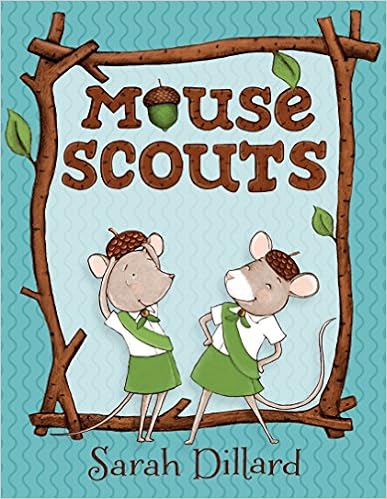
- Premise: A small troop of “Mouse Scouts” (akin to Girl Scouts) tries to earn their badges
- General thoughts: These are gentle books in which the girls in the troop must work together and overcome differences. “Handbook” asides feature information that humans can use as well.
- Social commentary: None
Lulu series, Judith Viorst

- Premise: “Terrible” (see below) child Lulu has various adventures to get what she wants
- General thoughts: Kids love seeing other kids be bad, and Lulu satisfies in that regard. There’s plenty of humor and repetition to help early readers.
- Social commentary: While it’s always refreshing to see a girl behaving badly, this book uses the word “bossy” liberally, a word that is almost exclusively applied to girls who assert themselves. It also makes Lulu’s resourcefulness and independence seem like they’re tied with her being spoiled and “terrible,” another trap that girls find themselves in. Lulu is drawn as Caucasian, though it’s not specified in the text.
Henry & Mudge series, Cynthia Rylant
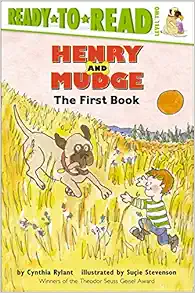
- Premise: A boy and his big, slobbery dog have various small-kid/dog adventures.
- General thoughts: Inoffensive and classic.
- Social commentary: Avoid the Annie and Snowball series that’s a spin-off. Annie is pretty obviously some mid-80s ideal of good little girls, though I do note that her dad is divorced for much of the series. Henry is Caucasian
Princess Posey series, Stephanie Greene
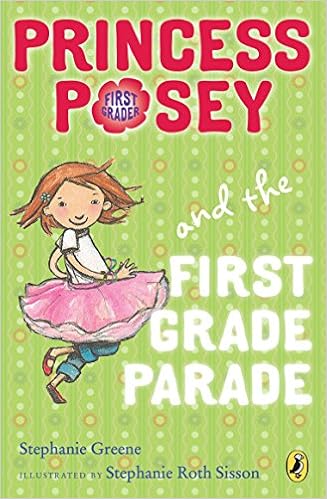
- Premise: A first-grader dons a tutu to give herself confidence as the imaginary “Princess Posey” and has typical first-grade adventures
- General thoughts: The writing in this is decent, and the adventures relatable. Neither particularly bad nor good.
- Social commentary: The Caucasian girl is given a lot of pink, sparkly things. Not much deviation from gender norms here.
Miss Bunsen’s School for Brilliant Girls, Erica-Jane Waters

- Premise: Girls who attend a rundown school for brilliant girls make wild inventions.
- General thoughts: I personally found the first of these to be fairly uninspired, with characters that are basically just over-the-top caricatures when they’re not one-dimensional.
- Social commentary: While the idea of brilliant, inventive girls is certainly nice to see, the inventions they actually come up with are so unrealistic they might as well be spells from Heidi Heckelbeck’s book. For an inventive girl making more realistic inventions, check out the Ada Lace series.
Big Kid Books
These books still have largish type, but you’ll find more complex emotions and interactions. While still obviously chapter books based on the length, illustrations, complexity, and type size, these are beginning to be more-than-one-sitting books. Characters are usually of early elementary school age.
Jasmine Toguchi series, Debbie Michiko Florence
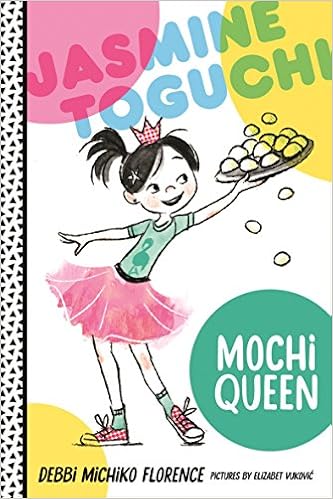
- Premise: Strong-willed, determined girl growing up in her Japanese-American household.
- General thoughts: We love Jasmine Toguchi! The first and third books in particular show Jasmine to be a determined kid who considers herself physically strong and always capable. I also like the spotlighting of certain Japanese traditions in each book.
- Social commentary: Jasmine is Japanese-American who views herself as strong and infinitely capable. She occasionally pushes up against the gender norms in her culture, but always gets past. Her parents both work, with her mom being an editor at a paper.
Lola Levine series, Monica Brown

- Premise: Soccer-loving second-grader Lola Levine manages a variety of social topics.
- General thoughts: We love Lola Levine! A quirky, opinionated kid who’s well fleshed out and whose stories seem real.
- Social commentary: Lola Levine is interracial (Peruvian/Jewish) much like Brown’s picture book character Marisol McDonald (Lola Levine’s favorite picture book character). She’s a hard-core soccer player. She’s painted with a broad tomboy brush, but her best friend is into more stereotypical girl stuff, and they find common ground (you get strong legs from soccer and ballet). Mom has a professional job while dad is an artist. Lola Levine and the Vacation Dream contains a fair amount of factual information about Peru. Interracial couple.
Violet Mackerel series, Anna Branford
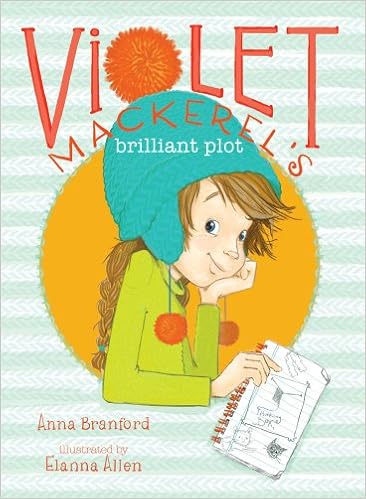
- Premise: Violet Mackerel is a young girl who loves Small Things and concocting Theories about how Small Things affect the world.
- General thoughts: We’re big fans. The plots here can be quite nuanced, relatively speaking, and really go deep on how Violet and her siblings feel and how they work through their feelings. Plus we love how Violet tries to make even Small Things have big impacts.
- Social commentary: Violet’s Caucasian family is definitely not well-off. If not poor, per se, they are often worrying about money, and Violet’s mom and siblings all work at the market to try and get money to get by. This causes jealousy when Violet meets a friend who’s clearly much better off. Violet’s mom is divorced (many references to “after Dad left”) and remarries within the series, which causes a lot of difficult feelings for Violet’s older siblings.
Wishtree, Katherine Applegate

- Premise: Red, a tree – a wishtree, even, where once a year people tie wishes to her branches – narrates a moment in the life of her community of people and animals.
- General thoughts: This book is a standout for its core message about community and friendship as well as its imagined world of talking trees and animals. (And the ways animals name themselves is a delightful thread). There’s just so much to appreciate here, and I was bawling by the momentous end of the community coming together to become stronger and save their beloved tree.
- Social commentary: A core part of the plot is a Muslim family who are being shunned and harassed by the community they’ve moved into.
Anna Wang series, Andrea Chang

- Premise: Bookworm and sewing enthusiast Anna Wang goes through her life.
- General thoughts: I really liked the writing in this book. The simple prose is good for beginning readers, but it also fits with Anna’s introspective, quiet nature. It also allows for a lot of reading between the lines. She’s a good character who is kind and thoughtful but also isn’t pushed around easily. T
- Social commentary: Anna is American-born Chinese who is, at first, embarassed my her mom’s imperfect English and the cleaning job she uses to pay for her nursing school. In the first book, her friend’s family seems to be having a hard time of it, with her dad often yelling and breaking things and her mom stashing her kids at friends’ houses as she separates from him. There are observations about Chinese culture and the way Caucasian classmates interact with them. “Do you speak Japanese?” asks one schoolmate.
Dory Fantasmagory series, Abby Hanlon
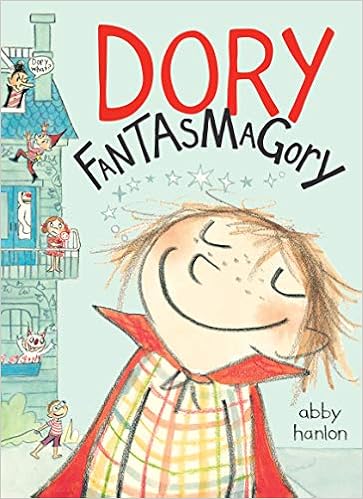
- Premise: Highly imaginative girl navigates a rich fantasy world that wraps around her day-to-day normal-kid adventures.
- General thoughts: It is very clear that Hanlon spent a lot of time around kids. Our daughter is a total Dory (aside from the reluctant reader bit). The imagination she brings to the world around her is wonderful and has an internal consistency throughout the series.
- Social commentary: Dory and her family/friends are all Caucasian.
The Wollstonecraft Detective Agency series, Jordan Stratford
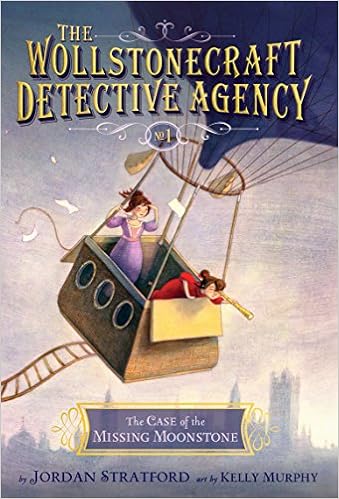
- Premise: Mary Godwin, who will grow up to be Mary Wollstonecraft Shelley, and Lady Ada Byron, who will grow up to be Ada Lovelace, pair up to solve mysteries in London.
- General thoughts: The author himself notes that this historical fiction is more fiction than historical – Mary and Ada wouldn’t have ever met and were years apart in age – but these books are a good introduction to mysteries for strong readers. Ada and Mary have a Sherlock/Watson vibe, with Ada being more analytical and Mary being more aware of social and human norms. Ada is presented as the sort of magical smart that only exists in books – in the first book she learns Turkish in a night.
- Social commentary: There is much discussion of what girls are allowed to do in London, and Ada is presented as being on the neurodiverse spectrum.
Book Uncle and Me, Uma Krishnaswami
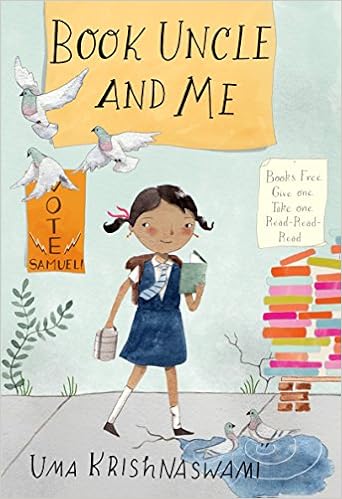
- Premise: Yasmin must save neighborhood fixture Book Uncle, who runs a free lending library street cart.
- General thoughts: This is a touching story about how kids help their community. Despite being unable to vote, they are able to organize their fellow townspeople and take political action to save someone they care about in the neighborhood.
- Social commentary: The book takes place in India, and Tamil words are sprinkled through the text without translation. The girl protagonist is a devoted book reader, and she is given a voice by virtue of her political actions. There is a thread about how a more conservative uncle disapproves of her learning and her mother’s job.
Dragons in a Bag, Zetta Elliott

- Premise: A boy left with a witch for the day gets involved in a magical errand to put baby dragons in their proper worlds
- General thoughts: A child in this world getting accidentally involved in some magical quest is hardly a new idea, but this story moves along nicely and adds a lot of nice twists.
- Social commentary: Where to start. All the characters are people of color. Everyone is struggling with money – Jax’s mother is trying to prevent them from getting evicted. One of the magical creatures is homeless and is also invisible (literally and metaphorically).
The Silver Arrow, Lev Grossman
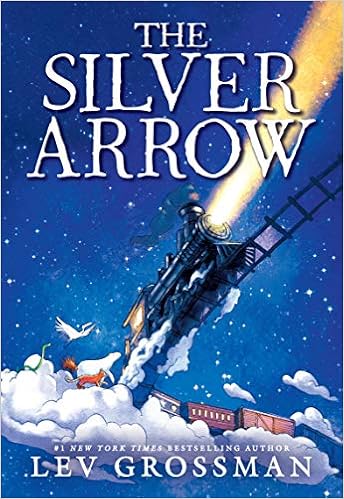
- Premise: When Kate asks the rich uncle she’s never met for a present, he delivers a magical train, and she and her brother Tom set off on a grand adventure.
- General thoughts: My daughter loved this book, particularly the idea that a train could have a library car and a candy car where you can eat all the candy you want without getting a stomachache. The book has a large environmental focus, but ultimately offers a message of hope against the tendency to despair: Just keep doing something, no matter how small.
- Social commentary: Lots of stuff about climate change – it is a key thrust of the book. Every human seems to be Caucasian.
Make-Believe Empire: A How-To Guide, Paul Berman
- Premise: This nonfiction book gives advice to kids on how to use household objects to construct their own vision of the imaginary lands inside their heads
- General thoughts: When we gave this book to our daughter, she went full-bore on it. She built herself an empire in her room by scavenging materials from all around. She drew a seal for her world and created religious songs of praise. Berman is a MacArthur recipient, and, like a disproportionate number of his genius peers, created his own vast empire as a youth. While this describes his own empire building, it can easily become inspiration for your own world builders.
- Social commentary: None, really. It was written long enough ago that pronouns probably default to “he,” but this is effectively the memoir of his own play.
Ada Lace series, Emily Calandrelli

- Premise: Computer-savvy girl moves to San Francisco and uses technology to solve problems.
- General thoughts: We like these storylines, and I particularly like that the technology they use is modern. Ada uses Arduinos and smartphones; you don’t have to explain to your kids why people are going somewhere to use a phone.
- Social commentary: Nerdy Caucasian girl who likes science and is skeptical of her woo-woo friend’s ideas. Ada is also color blind, which is very uncommon in girls. Dad is an art teacher and mom has the better-paid job as an art curator and is often traveling.
Nim’s Island series, Wendy Orr

- Premise: A girl who lives on a remote island goes on various adventures involving her wild friends, an adventure writer, and a scientist father.
- General thoughts: This quirky series often gets compared to The Swiss Family Robinson and Robinson Crusoe (minus the racism), and it’s an easy comparison to make as Nim takes care of herself during the various books (in the first, her dad is adrift at sea).
- Social commentary: Nim is a caring, intelligent, and very independent girl, but the first book is pretty blatant about people – including Nim – preferring that the hero Alex Rover is a man, even though the author Alex Rover tells Nim up front she’s not. There’s a strong theme of how thoughtless people can destroy ecologies.
Stella Diaz Has Something To Say, Angela Dominguez

- Premise: Third-grader Stella Diaz feels shy about speaking to people, but has to work up to a presentation.
- General thoughts: This is a delightful little book about Stella finding her voice and the courage to be friends with new people while navigating third-grade anxiety.
- Social commentary: Stella is Latina, and her family immigrated to Chicago from Mexico when she was just a baby. Mexican family comes to visit, and we get a taste of Mexican culture. Spanish words are sprinkled liberally in the text, but always with enough surrounding context for readers to suss out an unfamiliar word. Stella’s mom is a single mom, and her dad is bad about keeping promises or paying child support. Still, he clearly loves his children.
Clementine series, Sara Pennypacker

- Premise: Adventures of an eight-year-old as she navigates schools, friendships, etc.
- General thoughts: Ooh, boy, Clementine seems like a handful, which resonates with us. High-energy, smart, determined, and willful like our daughter, she would probably be classified as “spirited.” There are some complex things going on in these books, and the writing is decent.
- Social commentary: Clementine (Caucasian) is gifted at math! Hooray for a book that a) makes math talent seem desirable and b) has girls enjoying it. Her own family clearly lives more paycheck-to-paycheck, while her “best friend” (it’s complicated) clearly has a lot more money.
A Boy Called Bat, Elana K. Arnold

- Premise: An autistic boy is determined to keep a baby skunk his veterinarian mom brings home
- General thoughts: This is a sweet, gentle book (the first in a series), and you really feel for Bat even as you see his mom’s point about wild animals not being good pets.
- Social commentary: Bat is autistic, and the book tries to give you a view of what it’s like to be inside Bat. There’s a fair amount going on between the lines: Are kids teasing him or being sincere, his parents are divorced, and his father seems to be having a midlife crisis. You also get to see how Bat’s autism affects his interactions with everyone, including kids who want to be friends and his sister.
The Becket List, Adele Griffin

- Premise: City girl Rebecca Branch and her family move to the farm where her dad grew up, and everyone has to adjust to the new life.
- General thoughts: This is a fairly straightforward “suddenly I’m a new kid” book, but with nice sentiment about rural life. Becket – Rebecca’s new self-created nickname – is exuberant and maybe a touch out of control in ways that evoke Clementine (see above) and Cilla Lee-Jenkins (see below). But while she wants to embrace country life, she finds adjusting to a new crowd tricky. Note (and spoiler alert) for sensitive readers: the family dog dies of old age and a heart condition near the end of the book, in a passage that’s a touching conclusion.
- Social commentary: Both of Becket’s parents work as veterinarians. There’s a brief aside that a girl in the country is a bit darker (later implied to be a Latinx family) than the Caucasian Branch family, and their visiting city friends are African-American, but little is discussed in this vein.
Two Dogs in a Trench Coat series, Julie Falatko
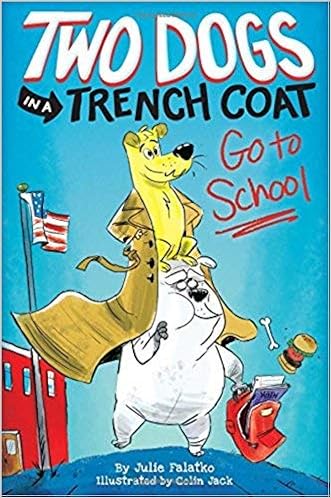
- Premise: Two dogs wrap themselves in a trench coat and venture out to school and the human world
- General thoughts: Our daughter was giggling non-stop during this and pausing frequently to show us something hilarious in the book. Even I found it often amusing, but don’t expect verisimilitude of any kind.
- Social commentary: All the human characters are Caucasian, with the exception of the main teacher in the story. There’s some negative views of school, but nothing too outside the norm.
The Derby Daredevils series, Kit Rosewater

- Premise: Five girls start a roller derby team in Austin’s junior league and have to navigate friendships along the way.
- General thoughts: The first book of this, at any rate, should have been longer. While I suppose it had to close with the team gelling for a trial bout, the slim volume and sheer amount of character introductions meant that I ended up not really knowing anything about any of the girls, except Kenzie, the focal point of the first book. They made a cohesive team in the end, but there was nothing to suggest they would or that it was even plausible that they would – three of the girls in the five-girl team have barely ever roller skated before the week in which the book takes place. I keep thinking of the anime Princess Nine in which the characters are slowly introduced until the big game at the end of the series, and so we get to see relationships and tensions develop in a realistic way. Later books seem to focus on individual characters, so maybe that’s where we learn enough about them to see how the team works.
- Social commentary: Roller derby on its own is one of the few ways our culture allows women to be visibly physically aggressive, so of course that’s worth noting. But Kenzie’s dad is a transgender man, and she has a middle-grade-level crush (fluttery feelings) about the girl next door who also ends up on the team.
Nick and Tesla series, Bob Pflugfelder

- Premise: Twins Nick and Tesla are sent to live with their would-be mad-scientist uncle when their parents are whisked away to work on a secret government project. At Uncle Newt’s house, they discover a lab full of stuff they can use to tinker in ways that help them solve mysteries around town.
- General thoughts: Our daughter enjoys these stories quite a bit. Full of kid-sized humor and wacky plots, the books will keep readers turning pages. The books also include build guides to build many of the projects Nick and Tesla construct. Topics range from simple electronics to spy gadgets and more. One could argue that the stories are rather thinly draped around the included projects, but they’re engaging enough.
- Social commentary: The Caucasian protagonists both seem equally capable of carrying out the projects, and they work together well with the neighbors (some of whom are people of color). The characterizations rely on some standard tropes: the short, squat security guard with a small ponytail; the slightly slobby curmudgeonly clerk at some sort of “loose parts” store full of components for projects.
The Night Fairy, Laura Amy Schlitz
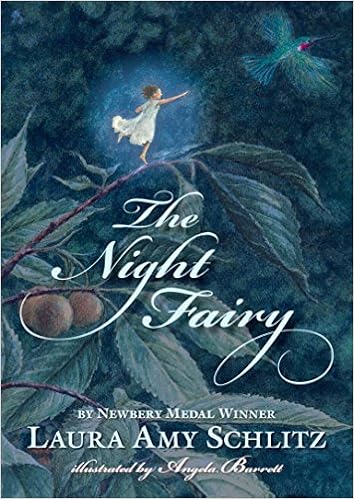
- Premise: A night fairy named Flory has a run-in with a bat that gets her wings bitten off, and she decides to try life as a day fairy.
- General thoughts: This classic story has a lot of depth. While one could read it as a straightforward adventure, the text offers a lot to dig into, even as just small bits and bites. For instance, because Flory uses her stinging spell so much, she takes on a more sharp, pointed appearance. She is selfish and haggling at the beginning of the book, only later learning how to do things just because they’re the right thing to do. Her magic is a total deus ex machina, always giving her exactly the magic she needs when she needs it, but that keeps the story moving well enough.
- Social commentary: Flory is a girl who decides to strike out on her own.
The Questioneers series, Andrea Beatty
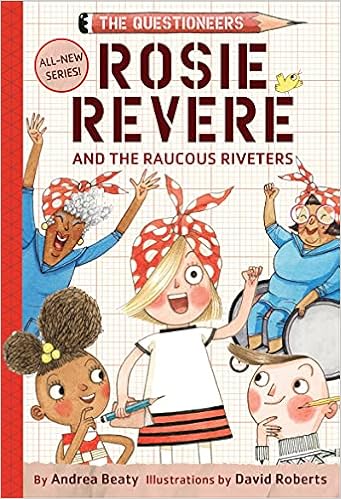
- Premise: Chapter book series continuing the adventures of picture book favorites Rosie Revere, Iggy Peck, and Ada Twist
- General thoughts: While we’re fans of the picture-book intros to the characters, I found the first book at least to have a plot that ping-pongs around nonsensically and introduce things willy-nilly without context. Fine for a bigger-kids book, but in this form factor, I wonder if readers will get confused about things like who Gizmo is. The STEAM process thinking is of course spot on, focusing on making mistakes and revising plans.
- Social commentary: Rosie Revere and Ada Twist are both STEAM-focused girls, and Ada Twist is African-American. One of the central characters is an older woman who is also an engineer. The first book focuses heavily on a bunch of older women who were riveters back in the day.
Roxie and the Hooligans series, Phyllis Reynolds Naylor
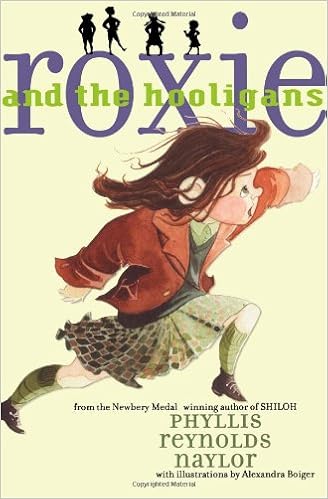
- Premise: Roxie is a frequently-bullied girl lacking confidence, especially since she’s the niece of a famous adventurer. But her book smarts end up being useful in real-world danger situations.
- General thoughts: I like Roxie’s quiet determination and how she uses her brain to get out of sticky situations. The bullies here are really mean, and the first book deals with robbers who say they’re going to slit the throats of the kids.
- Social commentary: Brainy girls for the win! There’s some subtle nods about why the bullies might be so bullying — parents who don’t care about them or don’t like them. Children are drawn as Caucasian.
Bea Garcia series, Deborah Zemke
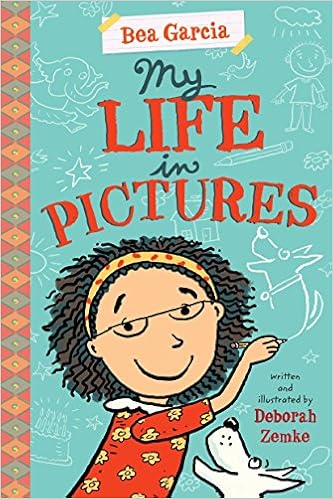
- Premise: Daily adventures of an artistic girl
- General thoughts: We like this series and how it incorporates Bea’s drawings as part of (and not just alongside) the text.
- Social commentary: Bea Garcia is Latina.
Ivy and Bean series, Annie Barrows

- Premise: Two friends navigate their neighborhood and schools in maybe-not-the-best-but-definitely-realistic ways.
- General thoughts: This is a popular series and one of the first chapter book series we hit upon. The solutions the kids come up with feel realistic but also totally bonkers to adults.
- Social commentary: These aren’t nice and sweet girls or kids. Bean is also always messy. It’s refreshing to see girls who are just normal kids and not unrealistically sweet and kind. Suburban neighborhood with Caucasian kids.
Beatrice Zinker, Upside-Down Thinker, Shelley Johannes

- Premise: A girl whose creativity is shown by literally having her think best when upside-down has school adventures
- General thoughts: The writing in this is poppy, which can be a bit wearing for the course of the book. I like the fact that Beatrice’s friendship issue is a bit different – her partner in crime from 2nd grade is trying to be more “normal.”
- Social commentary: Beatrice’s 3rd grade teacher is a good example of how not to be compassionate towards kids. She’s held up as a mean, judging figure. There’s a lot of commentary on being normal or not, though a fair amount is between the lines. Beatrice is Caucasian.
Calpurnia Tate, Girl Vet series, Jacqueline Kelly
Note: Don’t confuse with the middle-grade books The Evolution of Calpurnia Tate and The Curious World of Calpurnia Tate, which are more mature in topic
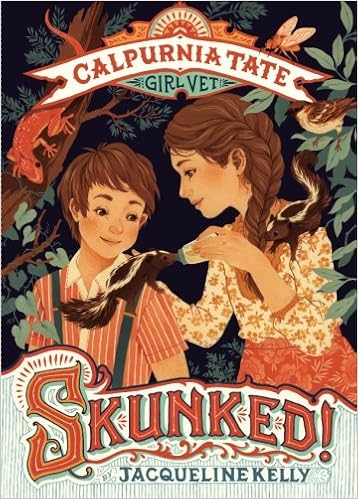
- Premise: A girl in 1900’s Texas wants to be a scientist and veterinarian, despite the wishes of her mom and the expectations about her future.
- General thoughts: I really like this series about a girl who gets introduced to science by her grandfather. I particularly liked Counting Sheep, in which Calpurnia bravely asks her mom to be paid for the sheep she delivers before the actual veterinarian can get there.
- Social commentary: Calpurnia often bumps up against what her wealthy Caucasian family and society at large imagine as the proper roles for girls, but she is determined to go the path she wants. Book 4 talks about income disparity (the Tates are well off). The middle-reader books touch on slavery (house slaves vs field slaves and using the term “quadroon”), but that’s barely hinted at in these books.
Knights vs. Dinosaurs, Matt Phelan
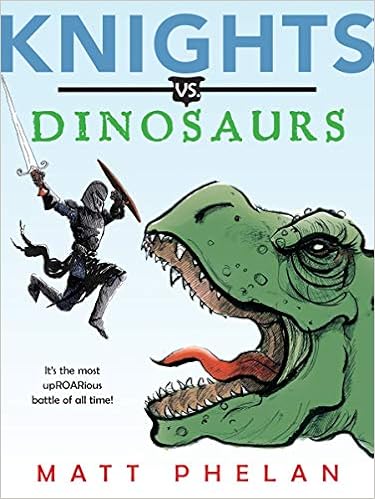
- Premise: Braggart Knights of the Round Table are sent back in time to battle dinosaurs. They have to work together to actually win, though.
- General thoughts: This is a bit like an Onion headline or SNL skit: Funny idea, but mediocre execution. The knight battles get old quickly, and the ending feels very neat.
- Social commentary: Two of the characters – spoiler! – are girls in disguise. This causes some consternation amongst the knights, but it’s done well enough. Though why you can imagine time-traveling knights but not having openly female Arthurian Knights is beyond me. Also, given the premise, it should be no surprise that there’s lots of violence in this book, which your kid may or may not like.
Mac B., Kid Spy series, Mac Barnett

- Premise: The real-life Mac Barnett spins a yarn of the somewhat fictional child Mac Barnett, who is called into duty as a spy.
- General thoughts: Barnett is a champ at writing for children, and this book falls right in his wheelhouse. The actual spying is silly, with somewhat ludicrous adventures, but every kid imagines themselves a spy, so this should satisfy that.
- Social commentary: Mac B. is, unsurprisingly, a Caucasian boy like Mac Barnett the author. Since he uses his own life as a guide, he lives with a divorced mom who doesn’t seem to have a lot of money.
Jada Jones series, Kelly Starling Lyons

- Premise: Typical friendship/school adventures
- General thoughts: Good exploration of feelings
- Social commentary: Jada is an African-American girl who enjoys science and is respected as a leader in her class.
Catlantis, Anna Starobinets

- Premise: A purebred ginger cat embarks on a time-spanning journey to rediscover the flower that gives cats nine lives.
- General thoughts: The plot in this book, translated from the Russian, is both bonkers and implausible (I mean, beyond the time travel aspects). But it’s full of cat puns and cats doing cat things, so it will appeal to cat-lover readers like my daughter.
- Social commentary: The female love interest doesn’t seem to have much agency in the book, and while she agrees to marry our hero, there’s another cat who assumes he can marry her if he wins the flower as a trophy. See Feminist Frequency’s https://feministfrequency.com/video/women-as-reward/ to get a sense of the cultural significance of women (even feline ones) treated like trophies themselves.
Isadora Moon series, Harriet Muncaster

- Premise: Half-vampire, half-fairy girl has standard lower grade school adventures but with supernatural elements
- General thoughts: This is a cute series about a girl who straddles two different worlds. I’m sure it will appeal to those former Goth parents who have to deal with fairy-loving (and not Faerie-loving) children. Note that the most notable aspect of vampires is solved by having her dad drink “red juice.”
- Social commentary: Maybe there’s something to be said for a girl who’s the child of two very different backgrounds, but honestly there doesn’t seem to be much here to abstract to, say, the experience of a biracial child.
Sophie Mouse series, Poppy Green

- Premise: Random adventures of anthropomorphized animals
- General thoughts: These are gentle books that touch on creativity, getting along with others, and solving problems.
- Social commentary: None really, except that there are pointed comments about tolerance with people who seem scary.
Princess Cora and the Crocodile, Laura Amy Schlitz
- Premise: A princess asks for a dog but gets a crocodile that then proceeds to wreak havoc on her life.
- General thoughts: This is kind of a cuckoo book, but it engendered lots of laughs in our house.
- Social commentary: A Caucasian princess highlighting and chafing at the constraints of princessness. Also a commentary on overscheduling of kids who want to get dirty and roam.
First Family in Space series, Raymond Bean
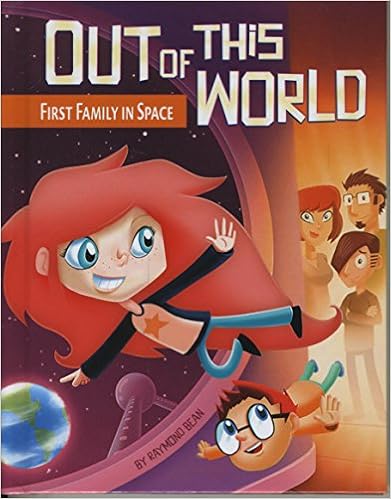
- Premise: Science fiction series involving the first full family to live in space. The protagonist has typical friendship and sibling issues with the backdrops of space exploration.
- General thoughts: The space element is neat, but we like the way they explore their feelings as well.
- Social commentary: Caucasian girl as pioneering space explorer.
The Data Set series, Ada Hopper
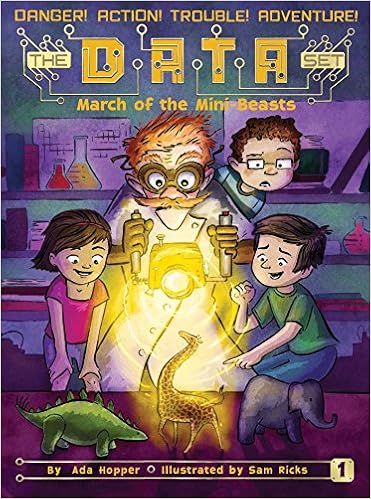
- Premise: Zany sci-fi adventures with 3 kids and a Doc Brown/mad scientist-type adult.
- General thoughts: These are enjoyable, but nor have we gone out of our way to read more. The science is ludicrous and contrived to create a plot point, but the stories are fine.
- Social commentary: Two of the characters have Latinx names, and the smartest member of the trio is the girl.
The Worst Witch series, Jill Murphy

- Premise: Someone’s got to be the worst student at witching school, right?
- General thoughts: Fairly predictable “bumbling student gets it right” plots, and the boarding school is full of characters and concepts that will set up nicely for Harry Potter, but you can’t help feel for the protagonist, and who doesn’t like magic?
- Social commentary: None, really, unless you count portraying the realities of British boarding schools. Children are all Caucasian, despite the reality of a British school.
My Father’s Dragon series, Ruth Stiles Gannett

- Premise: Boy recounting the stories of his father as a boy rescuing a dragon and going on adventures with it.
- General thoughts: A classic that people seem to have fond memories of, and I found the story itself clever enough.
- Social commentary: The illustrations of gorillas in the first book seem to echo the view at the time that Africans were more like gorillas than people. So not recommended for that.
The EMU Club series, Ruben Bolling

- Premise: Kids who solve random small mysteries end up tangling themselves into large mysteries with cuckoo plots
- General thoughts: We were generally meh on this series, but if you like the 13,etc-story treehouse zaniness, there are similar aspects here.
- Social commentary: One of the Caucasian kids is made fun of for having hippie parents and maybe for being on the spectrum. The one girl is often seen as annoying by her brother, but you could argue it’s because she’s younger, and not because she’s a girl.
Anna Hibiscus series, Atinuke
- Premise: African-Canadian girl has various adventures within her African village.
- General thoughts: We like this series (note that each book has four chapters that are separate stories). The characters feel real and are enjoyable.
- Social commentary: Anna’s family is clearly well-off, and there are discussions about people of different socioeconomic status and their interactions with the Hibiscus family. I feel like too much of the book reduces all of Africa to one set of mores and traditions, but that may get better as time goes on — the series started decades ago. Interracial couple.
Heidi Heckelbeck series, “Wanda Coven”

- Premise: Second-grader Heidi Heckelbeck is a witch whose spells mostly just make situations worse and teach her moral lessons.
- General thoughts: The setups are formulaic and the resolutions pretty pat. But they’re mostly enjoyable, and it’s fun to come up with your own spells in her style. Also, it’s a bit odd that Heidi’s not supposed to do spells but has a spell book uniquely suited to the needs of a second-grader.
- Social commentary: Girls do magic and boys do science. Ugh. Also, the ubiquitous mean girl is exactly what you’d imagine a stereotypical mean girl would look like. Heidi’s best friend is a minority (everyone else is Caucasian), though there’s nothing about that in the text, so she feels token-y
Frankly Frannie series, A.J. Stern

- Premise: Young girl desperate to have an adult job concocts new careers in each book, with amusing results
- General thoughts: Frannie’s a good character that speaks to how kids think and talk. She thinks she’s ready to be an adult and craves office supplies. But her made-up words quickly go from cute to grating over the course of the book.
- Social commentary: Frannie’s family is Caucasian and they’re implied to be middle-class.
Magic Treehouse, Mary Pope Osborne

- Premise: Two kids have various time travel adventures that center around Morgan LeFey.
- General thoughts: If you’ve looked up lists of chapter books, you’ve already found this seemingly endless series. The plot structure is repetitive (for each four books, travel to different points in time and get some object for some spell that needs all four), but they do try to include some nonfiction (there’s a companion series of nonfiction books that touch on each topic) and they confer some amount of early reader pop cultural literacy, I suppose. The Merlin’s Mysteries series picks up where TMT leaves off and are aimed at older readers.
- Social commentary: Once again, the boy is the field researcher/scientist, and the girl is the “emotionally sensitive” kid who uses some sort of light magic to talk to animals. But at times she rails against the sexism in places like Ancient Greece. The kids are suburban white, but they do interact with issues around race, which are usually dealt with pretty lightly.
Critter Club series, Callie Barkley

- Premise: A girl’s club for taking care of animals. Simple adventures revolve around interactions with animals.
- General thoughts: Harmless enough, and I like that they touch on the actual work of taking care of animals, but the girls are largely interchangeable.
- Social commentary: One member of the ensemble cast is a minority, but that doesn’t factor into anything, so she feels sort of tokenish. Most other characters are Caucasian.
The 13-Story Treehouse series, Andy Griffiths and Terry Denton
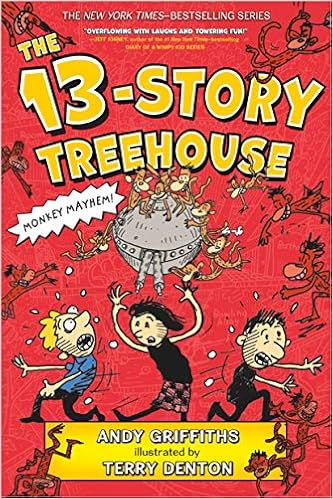
- Premise: Two boys and their next-door neighbor have wackadoodle adventures in their increasingly larger treehouse.
- General thoughts: My wife observed that this cuckoo bananas progression of story arcs is exactly the kind of story our daughter would tell, and I imagine that’s true in many families. Note that the kids call each other “stupidhead” and other such terms that parents might not want their kids repeating.
- Social commentary: All the characters are Caucasian.
Agatha, Girl of Mystery series, Stefano Turconi
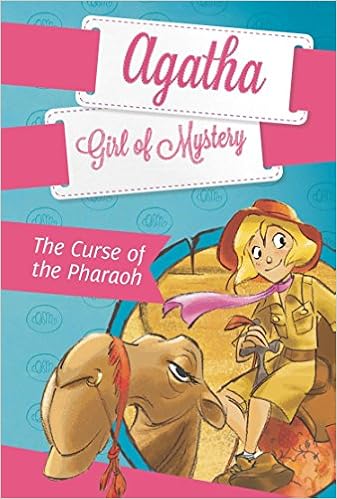
- Premise: A fabulously wealthy girl with “a formidable memory” travels the world solving mysteries.
- General thoughts: Our daughter liked reading the first book in this, and it would seem to tick a lot of kid-fantasy boxes: spying, detective work, infinite wealth, eccentric family members. I’m a bit mystified, in the first book, about the fact that her cousin passes the detective test even though Agatha did all the work. Also her “memory drawers” technique sounds like an attempt to talk about memory palaces, but the author doesn’t seem to really understand them.
- Social commentary: The very wealthy protagonists are Caucasian (though the butler is more ambiguous, which doesn’t help things) and the first book, at least, relies on a lot of stereotypes. The Egyptian natives are scared off by the idea of a curse. The German is fat and constantly eating (think Augustus Gloop). And the actual Egyptian Egyptologist is vaguely sinister and wears a robe of hieroglyphics. Plus the male protagonist says “everything is backwards here” about Egypt.
Where The Line Between Chapter Books and Normal Books With Illustrations Fades
These books are still chapter books in general, but one does begin to wonder in these books where the line is between “chapter book” and “just a book”. Some of these are also just books with illustrations.
Winterhouse, Ben Guterson

- Premise: Elizabeth Somers is mysteriously given a vacation at the posh Winterhouse hotel, where she helps solve a generations-old mystery.
- General thoughts: If ever there were a book tailored to my interests, this is it. Bookworm Elizabeth Somers loves puzzles of all kinds, especially word puzzles, and uses that intellect – and a chunk of magical assistance – to solve a mystery tied to an old book she finds in the expansive library of a posh hotel. I stayed up late to finish this because I found the end so gripping. There’s a fair amount of supernatural in here.
- Social commentary: A strong girl lead who solves puzzles through intelligence and creativity. While she is Caucasian, the new friend she meets and the hotel’s librarian are both people of color.
Bob, Wendy Mass & Rebecca Stead

- Premise: A magical creature has stayed put in a closet ever since the owner’s granddaughter told him to. But that was five years ago, and she’s just returned, having forgotten all about him.
- General thoughts: This is an interesting premise that quickly dodges a lot of the easy tropes, though there are still some to be found. Bob’s story, and Livy’s too, is pieced together by the two of them throughout the book, and the ending is quite a surprise.
- Social commentary: Livy is a smart, determined Caucasian girl. Her grandmother and all her neighbors are suffering from a long drought, and the poverty they’ve faced has taken its toll.
Cilla Lee-Jenkins series, Susan Tan

- Premise: Self-proclaimed future literary star Priscilla Lee-Jenkins grapples with the common travails of elementary school and family life, but also with racially insensitive townspeople
- General thoughts: Cilla Lee-Jenkins is a hilarious character, especially for the adults reading the book. It doesn’t take much to recognize that Cilla is outspoken and literal-minded, but some of that nuance may not be as obvious to young kids.
- Social commentary: Cilla’s father is Chinese and her mother is Caucasian, which means she is often subjected to racial insensitivity by other townspeople. People ask “what are you” and “where are you from” and are grossed out when she says she eats snails. Her parents’ respective families occupy very different social spheres as well, making for not much in the way of common ground.
The Lifters, Dave Eggers
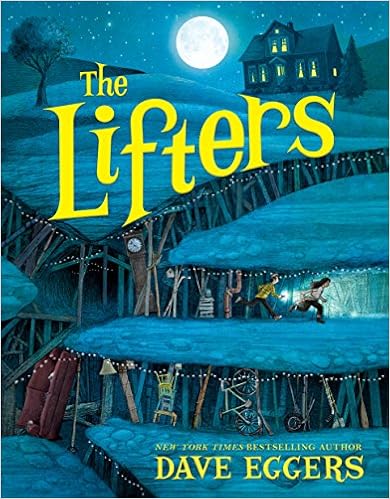
- Premise: A boy moves to a new town that is undercut by many many tunnels that a girl he meets works to prop up with whatever she can find.
- General thoughts: The plot in this is unusual, while still moving quickly, and there are some thoughtful ideas about sorrow and hope that bigger readers might catch. Short chapters and frequent illustrations make it a tractable read.
- Social commentary: The Caucasian protagonist’s family is poor, as are most people in the town, and the girl character is a person of color who wears a Ruth Bader Ginsburg t-shirt. While older readers might decide that the protagonist is attracted to her, you could also read it as just being fascinated by her in a Platonic way.
The Graveyard Book, Neil Gaiman
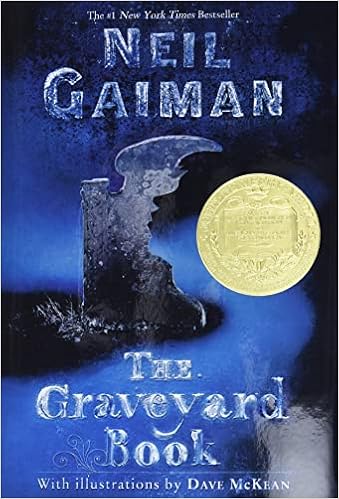
- Premise: A living boy is raised in a graveyard of ghosts (and one vampire) after his family is killed by a mysterious stranger.
- General thoughts: Neil Gaiman is a modern master of fairy tales, and he brings his gifts to bear in this homage to The Jungle Book (the book). More a collection of vignettes than a single story, there is nonetheless an overarching narrative arc as Nobody Owens wants to integrate into the living world and track down the mysterious stranger Jack who killed his family. Note that that initial chapter (and the book’s closing) are pretty tense and might be hard for younger readers to deal with.
- Social commentary: There is maybe one character of color in the book, and for a time Nobody has a spunky friend who’s a girl, but this is largely about a boy in England. Note that I wrote this well before the numerous allegations of rape came out against Gaiman. The statement about the book still stands, but note that Gaiman is not the role model we would have liked.
Unusual Chickens series, Kelly Jones

- Premise: A girl and her family inherit her great-uncle’s farm in small-town California, and it turns out his chickens have some unusual abilities.
- General thoughts: Unusually for a children’s book, this is told in epistolary format. The story goes some unexpected places but follows Sophie as she becomes more determined to raise her great-uncle’s chickens and fit in to the small town where her family has moved. The books are filled with actual information about poultry and poultry farming.
- Social commentary: Sophie makes a number of comments about race – her mother is Latina – and how people treat her. They ask if she works at the farm. Her mom raises her to be more perfect because people are constantly judging her as inferior because she’s not white. Also, the family has moved from a big city to a small town and is struggling financially.
Kiki’s Delivery Service, Eiko Kadono
- Premise: If you need a synopsis, please go watch the Studio Ghibli movie, because it’s endlessly endearing. But in case you’re in a hurry, a young witch needs to set out from home to set up her own business in another town.
- General thoughts: Like me, you may be surprised to learn that the beloved classic animated movie was based on a book. The movie is definitely an adaptation; some things are radically different, some things are mildly different, and some things are the same. The text in this is simple and clear, and the pace is quiet – quieter than the movie, even. The movie is so ingrained in my mind that I feel like I prefer it to the book, but the book is charming and cute as well.
- Social commentary: Girl having to make her way in the world by running her own business. There are some quiet notes about prejudice here and there.
Magical Animal Adoption Agency series, Kallie George

- Premise: Caucasian protagonist Clover considers herself unlucky until she stumbles into a volunteer position at the Magical Animal Adoption Agency, where witches, wizards, and other residents of the spooky Woods and Lands Beyond come to adopt unicorns, dragons, and more.
- General thoughts: This is a series sure to appeal to animal lovers everywhere. The scary bits are not too scary – a witch snatches part of a unicorn tail and a dragon claw and ties up Clover to get her blood – but the overall theme is that Clover’s view of herself as unlucky is simply a matter of perspective and focusing on the wrong things. The magical animals are totally adorable and there is much winking at fairy-tale tropes.
- Social commentary: None, really.
Wild Robot series, Peter Brown

- Premise: An intelligent, adaptive robot finds herself marooned on an island and must integrate herself into the wild animal community
- General thoughts: Book one of this series starts out gently but ends in a tense cliffhanger; you’ll want to race to get The Wild Robot Escapes to see how it’s resolved. There’s a lot to enjoy here about just listening to nature and being a part of it, versus trying to subordinate it to your will. Also, the writing manages to convey deep ideas in plain prose that should be easy for most readers at this level.
- Social commentary: The book is set in a post-climate change world, and the few humans you hear about come off much worse than the animals and the central robot. Roz is written as a girl.
Coraline, Neil Gaiman

- Premise: When Coraline, a young girl bored with her life and neglected by her parents, wanders through a secret door in their house, she finds herself in a not-quite-right parallel world run by her “other mother” who wants to trap Coraline forever.
- General thoughts: This modern-day fairy tale mixes an imaginative creepy world and cast of characters with a girl’s determination to not only escape but save others as well. Neil Gaiman is a masterful writer, and this is a great intro to his work for the younger set.
- Social commentary: Strong girl protagonist. Though the artwork (and the movie adaptation) paint Coraline as Caucasian, there’s not really any indication of that in the book.
Flora & Ulysses, Kate DiCamillo

- Premise: “A natural-born cynic” witnesses a squirrel’s transformation into a superhero (of sorts) and befriends him, despite the obstacles in the way.
- General throughts: I quite liked this quirky story with its oddball characters. Children will apprecate the relatively fast pace of the story, while adults will find deeper metaphors for tweenage issues with parents and relationships and of course DiCamillo’s reverent use of vocabulary. The graphic-novel-esque illustration blocks adds a nice meta layer of Flora loving superhero comic books and then finding herself in one, both through the story and in the literal sense the illustrations provide.
- Social commentary: Flora’s parents are divorced, as are William Spiver’s, and the kids are struggling with what that means.
The Magic Misfits series, Neil Patrick Harris

- Premise: A group of kids embodying different types of stage magic and performance solve problems in their small town.
- General thoughts: This is a fun series with a gang of kids acting as heroes and problem-solvers while also knowing a lot about stage magic. There are some tense parts for younger readers, but the action moves along quickly. The books have actual magic trick instructions scattered throughout.
- Social commentary: One of the main characters is an adoptee of two gay men, another is in a wheelchair, and another is illustrated as being a person of color.
The Nerviest Girl in the World, Melissa Wiley
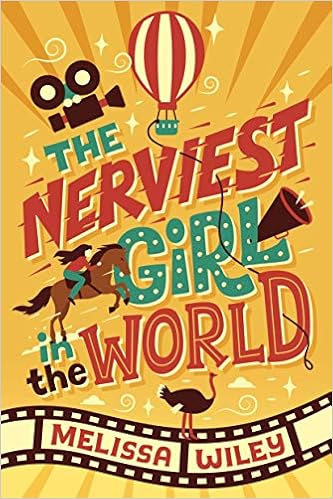
- Premise: Pearl White and her brothers get recruited to do stunts in short, silent “moving pictures”
- General thoughts: This is an enjoyable, unusual story about a girl from a ranching family who ends up doing stunts in silent Westerns when a film crew comes to town. There’s some typical middle-grade relationships, but it’s mostly a fun, quick story from the dawn of the movies era.
- Social commentary: People of color are barely if at all represented, but Pearl is a daring, courageous girl.
Voyage of the Frostheart, James Littler
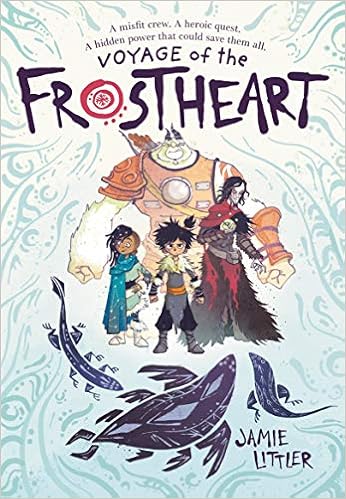
- Premise: Ash, a Song Weaver from a remote village, sets off on a quest to find his parents, accompanied by a ragtag crew.
- General thoughts: This book throws you into the action in the first few pages and rarely lets up. Ash’s Song Weaving can control the dreaded Leviathans that lurk all through the snow sea of his world, but those same skills are reviled by many villagers because some Song Weavers end up going mad and bringing the monsters down on the villages. Or so they say. This is a fairly standard quest story, but the snow-covered, post-apocalyptic world with its voyaging sledges is compelling and easy to imagine.
- Social commentary: Ash’s main friend on board the Frostheart is a girl and a person of color. Women don’t have any particularly subordinate role, even in the villages where an author might unconsciously show more women cooking and cleaning than men.
Weird Little Robots, Carolyn Crimi

- Premise: Awkward Caucasion new kid Penny Rose befriends “class weirdo” Lark (also Caucasian), and the two discover that Penny Rose’s robots have taken on a life of their own.
- General thoughts: The middle-grade drama here is pretty typical: Choosing between one’s true good friend and a group that seems good on the surface but requires you to make fun of your actual best friend. I love that Penny Rose’s robots are created from parts she scavenges from everywhere, as contrasted with the mean boy who uses off-the-shelf robot stuff. I enjoyed the book and the two main characters – Lark will remind many of Luna Lovegood. I’m a bit annoyed by books that purport to talk about science but then make it all “work” by using magic. Contrast with Zoey and Sassafras, where the science is real and doesn’t need magical creatures to make it so.
- Social commentary: Girls tinkering and doing science is always a welcome sight, and I like how Lark blends a love of ornithology with art and creativity (and Penny Rose’s robots are creative, too!). I believe only one of the side characters is a person of color.
Pip Bartlett series, Maggie Stiefvater and Jackson Pearce
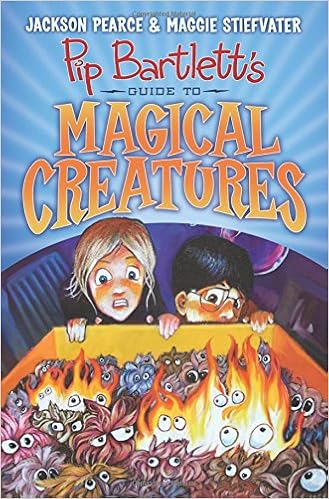
- Premise: Titular Pip Bartlett can talk to magical animals, of which there are many in her world, and she has adventures fueled by this ability.
- General thoughts: This is a charming little series, driven by the common fantasy of many kids to be able to talk to animals. The animal characters are quirky and amusing, and Pip’s unique ability gives voice to animals who have wry observations about the worlds around them. A good next step from Zoey and Sassafrass.
- Social commentary: Virtually all the lead characters are Caucasian women or girls, though women who are veterinarians and girls talking to adorable magical creatures aren’t exactly breaking any stereotypes. I could wish that Pip solves problems through sheer cleverness rather than the extra information from animals that only she is privy to, but that is part of the fantasy, I suppose. One could also raise an eyebrow at the fact that her primary companions for the first two books are a hypochondriac Latino boy and a similarly terrified-of-everything unicorn. I feel like they’re there to make her look confident and clever by comparison rather than letting her have those traits even next to someone less extreme in their fears. But Tomas is the only human who accepts her ability to talk to animals at face value.
Samantha Spinner series, Russell Ginns
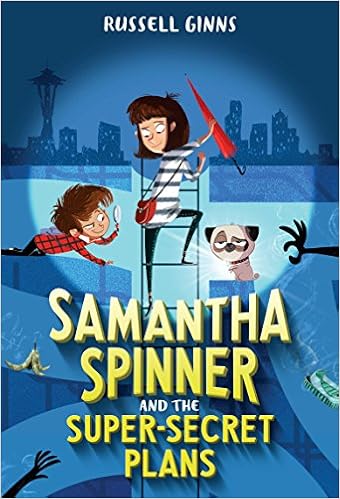
- Premise: A girl inherits a tattered old red umbrella from her maybe-deceased uncle that contains a secret map that leads her on lots of adventures.
- General thoughts: This outlandish series, featuring everything from secret passages connecting famous landmarks of the world to stench-ridden ninjas, is a romp of a book. The adventures involve all sorts of off-the-wall antics and people, but I’m appreciative of the fact that the book is itself an ARG which will lead you to websites and yet more puzzles. The second book in particular bogs down with details that feel more like an attempt to hit a page count than to hold the narrative together. This won’t win any literary prizes, but our daughter read through these at an eager clip.
- Social commentary: The main problem-solver is a girl, but she also has a big sister who loves nothing more than shopping and fashion. The characters could be interpreted as minorities in the illustrations, though the cover illustrations really lead you to believe the kids are all white.
The Last Kids on Earth series, Max Brallier

- Premise: Somehow the only survivors in a small town after a zombie-monster apocalypse are four middle-grade kids.
- General thoughts: Despite the grim premise, this series is intended as a comedy, and is full of the kinds of things that kids will laugh at. Narrator Jack Sullivan is arrogant in a way that only a middle-grader can be, but his fellow survivors and he form a team that is poised to battle the monsters swarming around them. Plot holes abound – why is their treehouse safe when there are huge monsters all over the place? – but if your kid likes cartoon/video game violence and antics, this is a good series. The kids seem fairly blasé about the world they find themselves in, even though there are rumors of people surviving (in some cases their families) “out west.” As I was reading the first one, I noticed that there was going to be a Switch game based on the series, and the fighting styles of the characters line up with your standard brawler.
- Social commentary: Jack has some pretty retrograde views about women, assuming in the first book that the love of his life (who may or may not know who he is) is desperately awaiting his rescue. Not so much, it turns out. But Jack is also a foster child who’s been shuttled from home to home for years, and this gives him a deeper appreciation of the “found family” he finds himself with.
Nikki Tesla and the Ferret-Proof Death Ray, Jess Keating
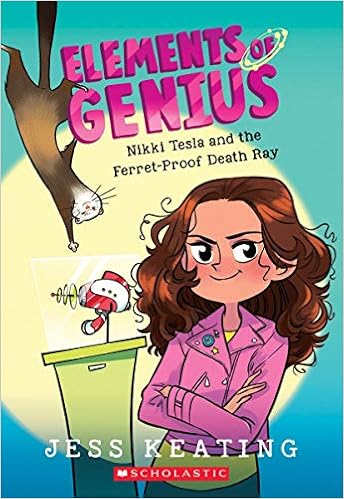
- Premise: The world’s smartest kids are recruited into an academy that routinely saves the world.
- General thoughts: This is a novel take on the “new kid at school” genre of middle-grade fiction. The school in this case is compared to the Professor X School for Gifted Youngsters, and comprises seven incredibly gifted children. Who fight against supervillains. The first book sets up a series, which promises to be a fun romp. Actual science and trivia are sprinkled about, but this is really just a fun adventure celebrating ludicrously smart kids.
- Social commentary: Two people of color are included in the seven kids, and four of the seven are girls. But they go to a totally luxe school with its own private jet.
Katt vs. Dogg, James Patterson and Chris Grabenstein

- Premise: A young katt and a young dogg (anthropomorphized versions of our most common pets) get lost in the woods and have to work together despite being sworn enemies.
- General thoughts: This is a pretty blatant “Enemy Mine” trope, with the katt and dogg flinging insults at each other until they figure out they should work together to get out of the wilderness and back to their families. Despite the anthropomorphism and the really odd hybrids of animal species who have managed to get along, unlike the famously antagonistic katts and doggs, this book manages to introduce some actual trivia about our non-anthropomorphic cats and dogs. There’s a small twist at the end, but it all works out for the best, and the two become fast friends who work to educate other katt and dogg families about their prejudices.
- Social commentary: The raging hatred between the katts and doggs is a skin you could stretch over any two groups who hate each other based on willful ignorance. Some journalists might not like the portrayal of the press as sensationalist and exploitive, but those of us with a cynical view of the fifth estate will probably see much truth in the machinations of the ferret journalist.
Max Einstein series, James Patterson and Chris Grabenstein
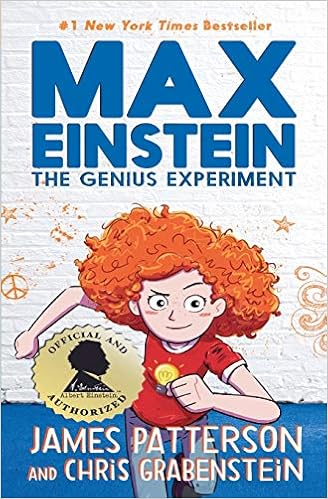
- Premise: Supergenius Maxine Einstein is recruited along with eight other genius kids to solve problems for making life better.
- General thoughts: In theory, this should tick a lot of boxes. Smart girl as a heroine, a multiethnic cast of other genius kids, and efforts to use their intelligence to make the world a better place. In practice, I found the constant drumbeat of Albert Einstein quotes to be annoying, as was Max’s breezy “that’s easy” when faced with theoretically difficult problems. Though in the end she comes against thornier challenges, she still rather quickly comes to solutions for deeply entrenched global problems. But my daughter really liked the books, so yours may as well. I do like that the book covers real-world problems and demphasizes unfettered greed is less desirable than empathy and a desire to understand the holistic problems.
- Social commentary: In addition to being a super-smart girl, Max is homeless and in and out of foster care. When we first meet her, she’s trying to figure out a way to heat the building she and fellow homeless people are squatting in.
The Trumpet of the Swan, E.B. White

- Premise: A bildungsroman about a voiceless trumpeter swan who finds a way to communicate with an actual trumpet.
- General thoughts: You probably know White’s other books, but I hadn’t read this one before. It’s a bit of an absurd story, but it’s an engaging plot and of course White’s writing about the natural world is lovely.
- Social commentary: White is of his time, and writes women in the way you’d expect. The business owners and adventurers are all men. The only woman with a significant speaking part is a school teacher. I don’t even think Serena, Louis’ love, speaks in the book. All we’re told about her is that she’s pretty and admires his possessions. We never even learn the backstory that brings her coincidentally to a far-flung point with Louis.
Thea Sisters series, “Thea Stilton”
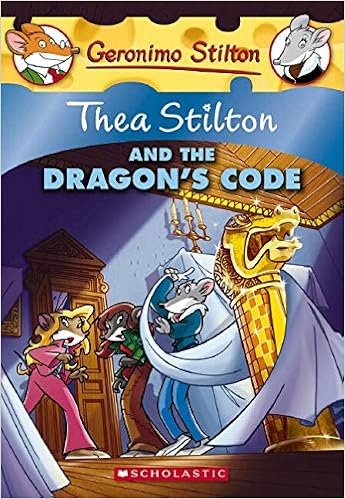
- Premise: Five well-to-do mouse girl characters go on a seemingly endless stream of adventures around the world where they solve mysteries and fight crime.
- General thoughts: Somehow this sprawling series avoids being too formulaic. While each book shows the girls setting off on an epic adventure and helping friends around the world, the shape those adventures take can be quite different, ranging from simple action-based to multistage treasure hunts. The main books (not the more fantastical special editions) feature a healthy dollop of nonfiction asides about the area they’re visiting, and there’s plenty of cues to help with dialogic reading. The special editions are bigger and, as noted, more fantastical, but are more popular with our daughter. The books are filled with lots of mouse and cheese “jokes”, and you will soon find yourself reading “famous” as “famouse” in your non Thea Sisters reading. The books are offshoots of Geronimo Stilton, which we’ve not read.
- Social commentary: The girls seem to have a lot of money, but they do have diverse backgrounds, including Peruvian and Chinese. One of the girls is highly technical, another is very good with mechanics and vehicles, and yet another is a “walking encyclopedia.” There’s a blond fashion-loving rodent who often seems there for comic relief, and there are many heterosexual crushes.
Sam the Man series, Frances O’Roark Dowell

- Premise: In a way kids will appreciate, Sam comes up with various roundabout schemes to solve his problems. Reminiscent of Violet Mackerel.
- General thoughts: These are gentle books with plots that are complex but realistic.
- Social commentary: Sam’s family is Caucasian, but I believe one of his neighbors is a person of color
Ra The Mighty series, A.B. Greenfield

- Premise: Pharoah’s self-important cat teams up with a dung beetle and a stray cat to solve mysteries.
- General thoughts: The fact that Ra is puffed up about his awesomeness while the dung beetle does all the actual work has something of a Jeeves and Wooster feel. The plots take unexpected twists, along the way giving a peek into royalty and customs in Ancient Egypt.
- Social commentary: There are some asides about how the royalty is largely unconcerned with their servants, but for the most part this is animals talking to each other.
Me & Mister P, Maria Farrer

- Premise: A silent polar bear comes to live with Arthur and his family, which includes his autistic younger brother Liam
- General thoughts: This book goes pretty deep in exploring how Arthur navigates his feelings about his special needs brother, who he feels gets all the attention. Mister P has similarities to his brother — he’s bothered by loud noises, he doesn’t quite fit in socially — but in some ways he’s also Arthur’s best self — he’s kind to the younger brother, is good at soccer, and defends Liam against taunts by others.
- Social commentary: Liam is very definitely autistic, though I don’t believe that term is used in the book. Characters are drawn as Caucasian.
The Story of Diva and Flea, Mo Willems
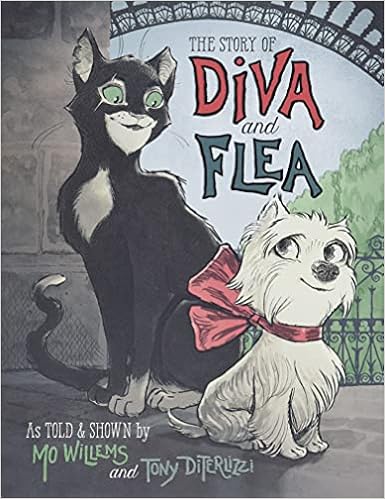
- Premise: Diva, a pampered, sheltered terrier dog in Paris, meets Flea, a self-styled raconteur cat who encourages Diva to step out of the protective household even as she encourages Flea to step in to her life.
- General thoughts: Mo Willems is a masterful writer for this age range, of course, but this is a quieter book than his Pigeon and Elephant/Piggie series. It’s hard to argue with the lovely Parisian backdrop in this book, and while the “city mouse vs. country mouse” trope is well-worn, this story still manages to entertain with its ankle-height view of the world around the two animals.
- Social commentary: None
Friday Barnes series, R. A. Spratt

- “Imagine if Sherlock Holmes was an 11-year-old girl” says the blurb. Yes. In particular, imagine if the over-the-top-with-all-the-detail-observations-and-leaps Benedict Cumberbatch Sherlock Holmes was not only an 11-year-old girl. but even more ludicrous.
- General thoughts: I’m generally weary of the TVGenius trope in its book form. Friday is magic smart, not realistically smart, and I prefer stories where the kids are more relatable. Still, my daughter enjoys these quick reads.
- Social commentary: Girls aside from Friday are often labeled as ditzy and boy-crazy, Friday’s friend insists that beautiful-boy Ian is mean to her because he likes her (actually, no, he actually dislikes her), broad sweeping generalizations made about all manner of people, and lots of not-very-subtle digs about how unintelligent everyone else is.
The Terrible Two series, Mac Barnett and John Jory

- Premise: Two 11-year-old boys pull off elaborate pranks on their own and then together
- General thoughts: We’re big Mac Barnett fans, but we were meh for the first one. It starts slow, though finishes better, and portrays principals as buffoons. There are good vocabulary words in the text, though.
- Social commentary: Teachers and principals as asses, unflattering portrayal of small towns. One character might be a person of color, but the main boys are not.
The Unicorn Rescue Society series, Adam Gidwitz

- Premise: Two kids and a mad professor-type rescue mythical creatures. Maybe someday even unicorns.
- General thoughts: A straightforward story that leans heavily on a lot of tropes, it nonetheless offers up a compelling narrative.
- Social commentary: The girl character is a person of color with the unusual name of Uchenna, there are hints that the Caucasian boy Elliott lives solely with his mother and grandmother, and the professor is Peruvian.